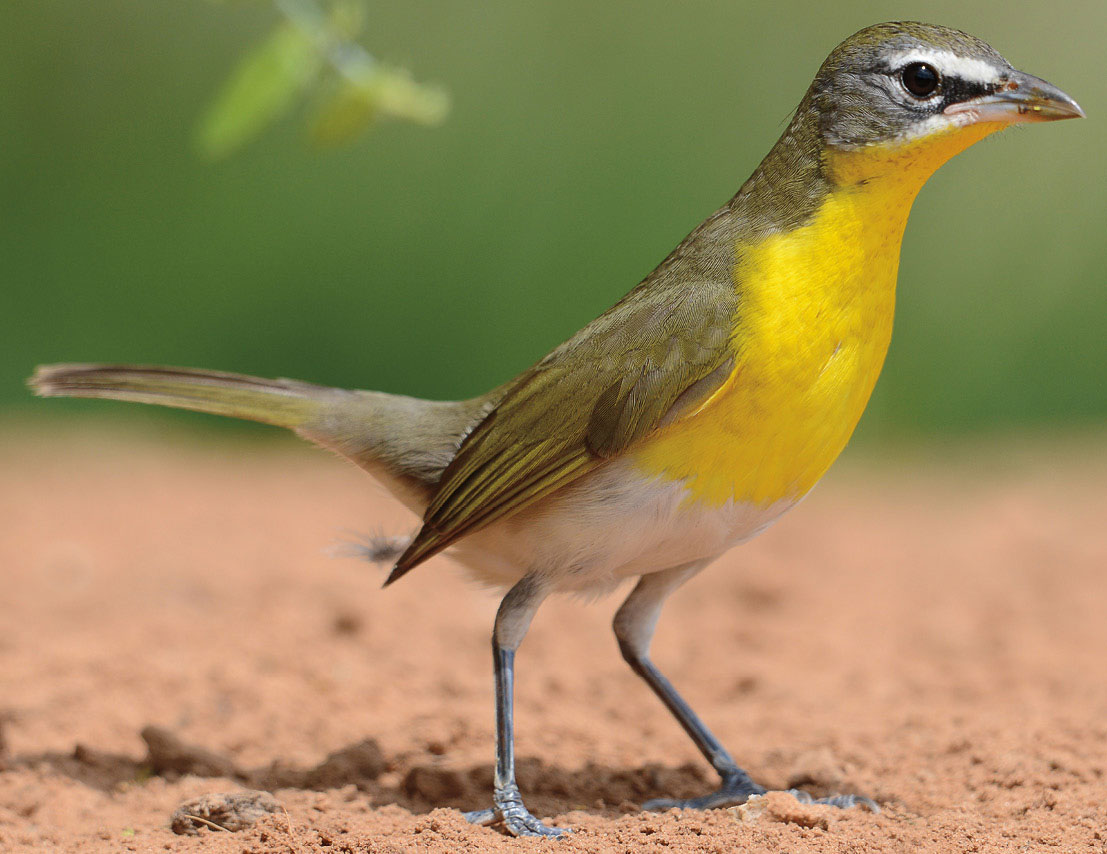The Birders’ Dozen Profile 5: Yellow-breasted Chat
Dr. Jessica Outcalt, consulting bird biologist
 Yellow-breasted Chat, image courtesy Matt Williams Nature Photography
Yellow-breasted Chat, image courtesy Matt Williams Nature Photography
Welcome to the Birders’ Dozen! Over the next several issues, we are going to continue introducing the bird species from Forestry for the Birds. The Birders’ Dozen are forest birds that can benefit from targeted management practices, as most are declining due to habitat loss. We’ve curated this list to cover a wide range of habitat types, from young to mature forest, open to closed canopy, or dense to non-existent shrub layers. Our goal is to engage landowners and foresters in the process of managing forests for wildlife, or “forests for the birds.”
Today’s bird is a unique one, and many people have no experience with it, unlike favorites like the Baltimore Oriole. Once considered a warbler in the family Parulidae, the elusive and talkative Yellow-breasted Chat is now the only member of its own family, Icteriidae. Chats are often hard to find, in large part because their preferred habitat is difficult to access – dense, scrubby vegetation on edges or in cleared areas. As forests in eastern North America have matured, the chat has lost suitable habitat and its population has declined in many areas.
Natural History
In its breeding range, the Yellow-breasted Chat is a young forest specialist. Regenerating clearcuts, old fields, and other forest openings or edges are consistently used by chats, particularly areas with high availability of fruits and invertebrates. This habitat usage, especially when it’s near streams and wetlands, overlaps with other species such as Common Yellowthroat, Prothonotary Warbler, and Prairie Warbler, species that are also in need of proactive management. Dense thickets that offer shelter from predators are among the most important characteristics that management can target for Yellow-breasted Chats. Chats breed across the United States and migrate around the Gulf of Mexico to wintering grounds in Central America; due to the chat’s secretive nature, information about migration is sparse.
The chat is well-named – it’s a chatty, loud bird, despite its tendencies to skulk and hide in thickets. Males cultivate a broad repertoire of sounds and songs, which can be quite variable, including sounds ranging from chirps and whistles to squawks and caws. The male sings from prominent perches or while hidden in thickets, defending its territory and attracting its mate. Chats are generally monogamous during the breeding season, though males and females might find new mates in subsequent years. Nests, constructed entirely by the female, are located near the ground in dense shrubs, often in blackberry thickets. Females lay 3 to 5 speckled, cream-colored eggs, which incubate for 10-12 days. Both parents feed the young until they leave the nest around 9 days after hatching.
The Brown-headed Cowbird, a medium-sized glossy black bird with a dull brown head, is what’s known as a brood parasite. These birds lay their eggs in other birds’ nests, forcing the host to raise young cowbirds as their own. Brown-headed Cowbirds’ geographic range overlaps with most of the Yellow-breasted Chat’s, and since they inhabit very similar habitats (edge or shrubby areas), chats are frequently parasitized by cowbirds. Some chats may abandon parasitized nests, while others may raise cowbird chicks alongside their own young, which can be exhausting for the parents. This additional strain can exacerbate threats to the chat’s population, such as habitat loss.
Habitat Management
Yellow-breasted Chat populations have decreased considerably since the mid-1900s, largely attributed to loss of breeding habitat caused by maturing forests. Mature forests can benefit many birds, like the Wood Thrush whom we’ll meet in the next issue, but the trade-off between old and young forest has shifted heavily towards old forests. This means that young forest specialists like the chat have lost considerable habitat. Management techniques that create young forest patches with dense foliage and an open canopy are important tools that can benefit this charismatic species.
The chat’s habitat is, by nature, present only for a few years. Regenerating clearcuts, regularly cleared power line corridors, abandoned cropland, and other ephemeral habitat areas can foster chat breeding populations. Though clearcuts are often viewed unfavorably, the dense shrub and young tree growth that occurs after harvesting is often beneficial for a large number of species. Clearcuts and large shelterwood harvests, especially when shrubs like blackberry and dogwood are present, create ideal chat habitat.
Conclusion
While the mental image many of us conjure when we hear “forest birds” involves an old-growth or mature forest, the truth is that many Indiana forest birds depend on young forest as well as old. The Yellow-breasted Chat is the perfect example of this, depending on regenerating forest, often only a few years old. Though habitat management has historically focused on mature forest, provision of young forest through the use of techniques like clearcuts and large shelterwood harvests can greatly benefit these secretive and talkative little birds.
Special thanks to the Alcoa Foundation, the Indiana Forestry Educational Foundation, and The Nature Conservancy for their support and leadership of Forestry for the Birds.
Jessica Outcalt was an independent consulting biologist who worked with The Nature Conservancy to develop the “Birders’ Dozen Profiles.” She is now an Agriculture and Natural Resources educator with Purdue Extension in Grant County. She completed her BS in biology at Taylor University, her PhD in wildlife ecology at Purdue University, and is passionate about birds and getting people involved in conservation and scientific processes.
References
Ricketts, Matthew S., and Gary Ritchison. “Nesting Success of Yellow-Breasted Chats: Effects of Nest Site and Territory Vegetation Structure.” The Wilson Bulletin 112(4), 510-516, (1 December 2000). https://doi.org/10.1676/0043-5643(2000)112[0510:NSOYBC]2.0.CO;2
Thompson, C. F. and K. P. Eckerle (2022). Yellow-breasted Chat (Icteria virens), version 2.0. In Birds of the World (P. G. Rodewald and B. K. Keeney, Editors). Cornell Lab of Ornithology, Ithaca, NY, USA. https://doi.org/10.2173/bow.yebcha.02
